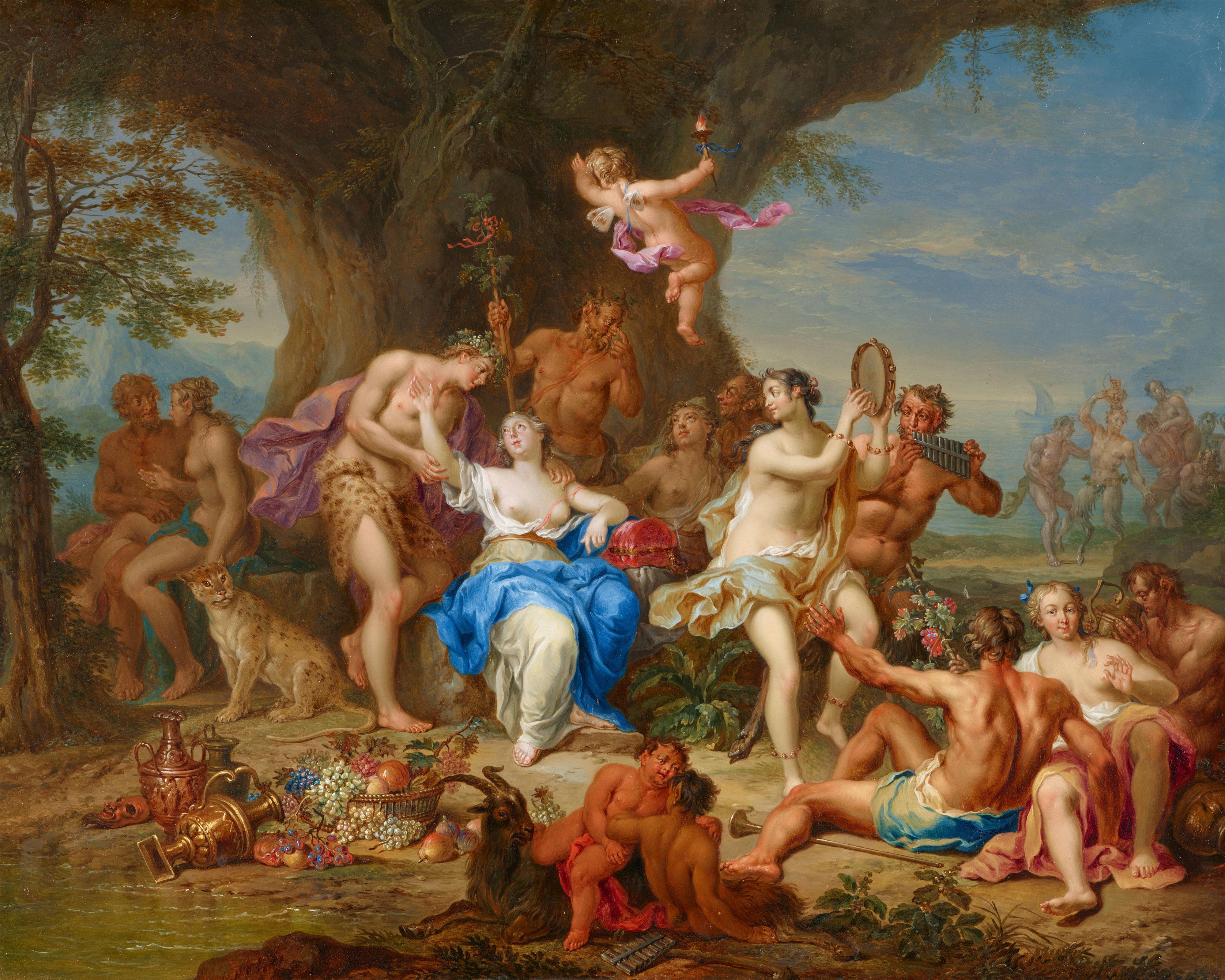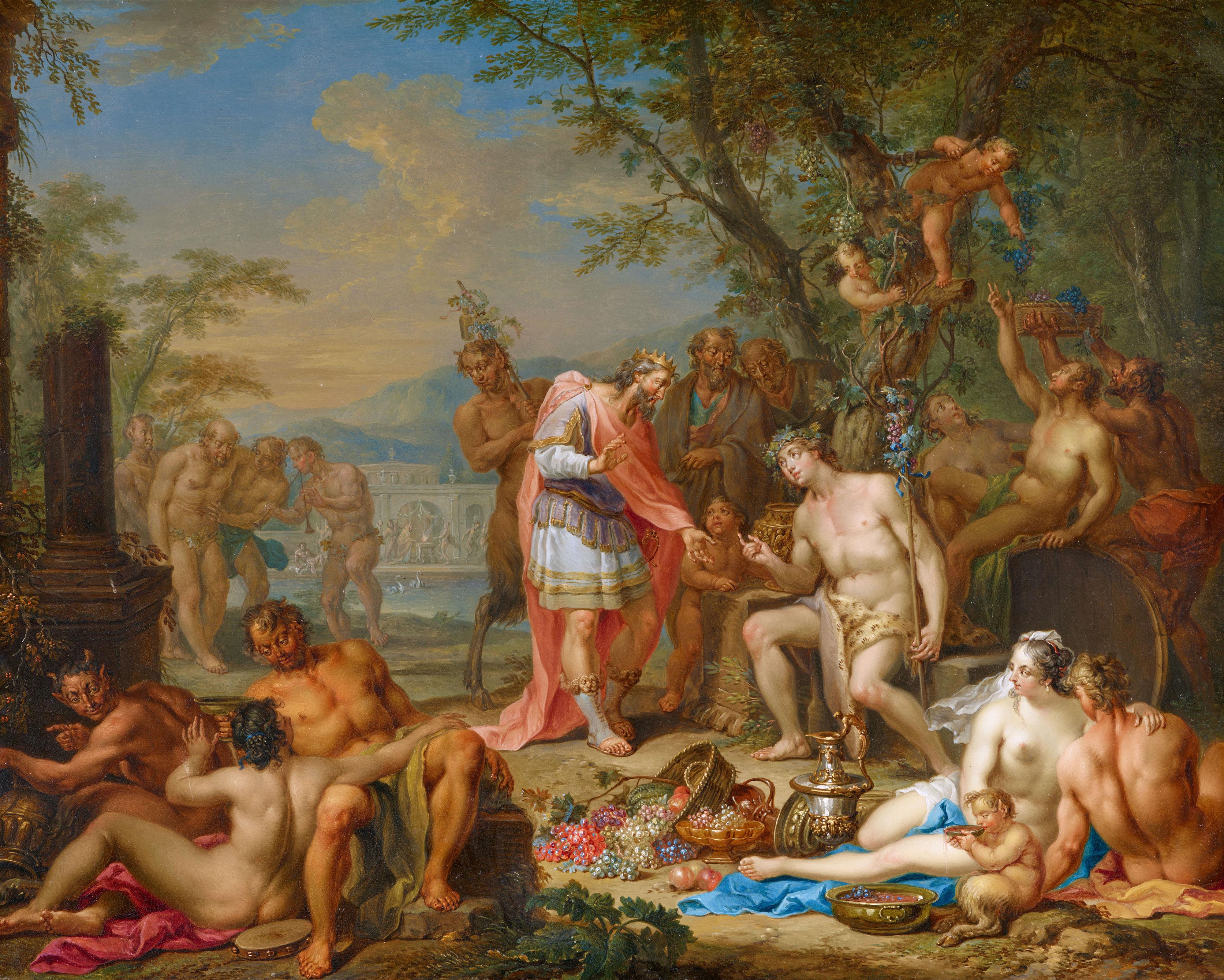Franz Christoph Janneck
Bacchus and Ariadne on Naxos
King Oeneus Swearing Allegiance to Bacchus
Oil on copper. 40.6 x 49.5 cm each.
Franz Christoph Janneck was born in Graz in 1703. From 1730 onwards he can be traced to Vienna, after which journeys to southern Germany and Frankfurt are documented. In 1740, the year of Maria Theresa's coronation, he finally settled in Vienna, where he became one of the city's most successful painters together with Johann Georg Platzer. Both artists cultivated a refined style of painting, had a preference for extremely detailed figures and delighted in small still lifes, which they inserted into their figural compositions. Janneck and Platzer both favoured a bright, radiant colour palette inspired by French court painting and thus became the leading representatives of the Rococo in Vienna.
The motifs in this pair of paintings are taken from Ovid's Metamorphoses, that inexhaustible treasure trove of sensual, frivolous themes from the ancient world of the gods that were so popular in this era - above all the tales of the young Bacchus, god of wine, grapes, sensual pleasures and ecstasy.
Bacchus is the main character in both scenes. One painting depicts the story of Bacchus and Ariadne on Naxos. Ariadne, the daughter of King Minos of Crete, helped Theseus escape from the labyrinth after defeating the Minotaur. On his way back to Athens, Theseus abducted the princess but left her stranded on the island of Naxos. It was there that she encountered Bacchus, who immediately fell in love with her. Janneck shows the moment of the young god's first encounter with the afflicted Ariadne, surrounding her with a bustling bacchanalian crowd of dancing maenads, nymphs and buck-legged satyrs.
The second scene, in which King Oineus swears allegiance to Bacchus, is far less well known. Bacchus once visted Oineus, king of Pleuron and Calydon, and was impressed by his hospitality and generosity. In thanks, Bacchus presented him with a vine and instructed him in the art of viticulture, after which Oineus planted the mountains of Aetolia with grapes. In his honour, the plant was henceforth known as oineus, from which oinos, the Greek name for wine, and the term oenology are derived.
Provenance
The Glückselig collection, Vienna. Auctioned in Vienna 11-13.02.1936, lot 68 (labelled on the reverse). - Private collection, Italy.




